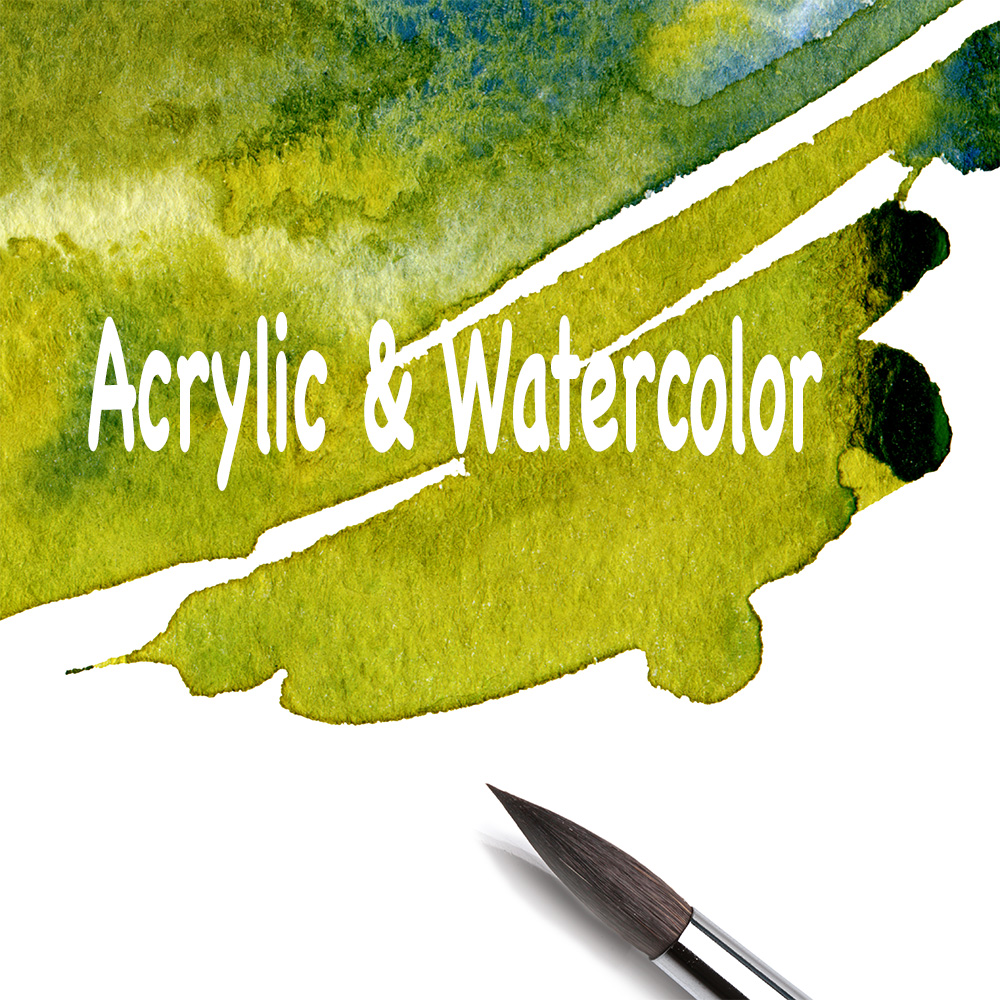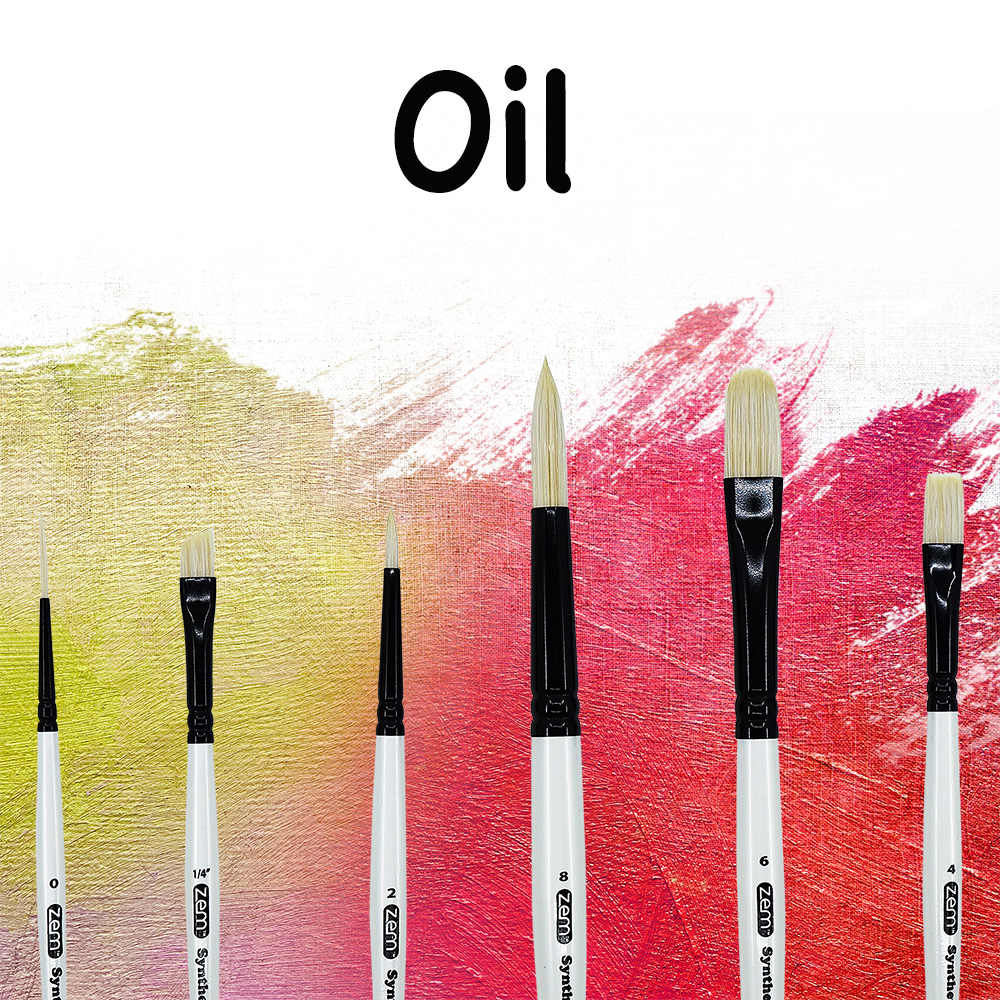Like artists, art brushes vary. Brush methods vary. But losing a favorite brush hurts. What's more disheartening, though, is prematurely losing a brush owing to negligence. To keep your brushes performing at their best, you need to break them in and learn how to clean them. Despite its apparent obviousness, many people fail to recognize its significance. But what's the best way to break in a new paintbrush and keep them clean? Read on to learn.

How to properly break in and care for your art brushes
A paintbrush is a channel through which the artist's sensibility, expression, and perception must pass. The brush they use affects the painting's style and finish, as well as the artist's productivity and satisfaction.
Master proper brush cleaning, caring, and storing methods from the experts for optimal brush performance.
This article will discuss the best ways to break in and care for new paintbrushes, along with storing them during and after use. Paintbrushes are high-priced precision instruments that, with good maintenance, can last for quite some time. Observing these measures can help you avoid typical problems associated with using a paintbrush.
How to break in your new paintbrush
Whether you're a novice painter or an experienced artist, starting with a new paintbrush can be exciting. But before you can start, you'll need to break in your new brush. This important step will help ensure your brush performs well and lasts for years to come.
When you first take your brand-new paintbrushes out of the packaging and unpack them at home, you will find that the bristles are very stiff and seem stuck together. New art brushes usually have a tiny film of glue called sizing on the hair to keep the hairs in place while the brush is being transported or on display. Before using your brush for the first time, make sure you carefully wash the sizing with lukewarm water, as outlined below.
Preparing new paintbrushes
Here's a quick guide on how to break in your new paintbrush:
- First, thoroughly soak the brush with lukewarm running water.
- While the water is running over the bristle, lightly rub the bristles with your fingertips to eliminate the debris from the manufacturing process and dissolve any oils on the brush.
- Using your first finger and thumb, starting at the base of the bristle, gently squeeze and drag the bristle towards the tip while the brush is still soaking wet to help reshape the bristles, pushing out any remaining air and removing excess moisture.
- Repeat the preceding steps twice with a new brush. This improves the performance of the brush, even if it is not brand new.
- Next, saturate the brush to an extreme degree with color, so that the color reaches the center of the brush. Carefully remove the surplus color.
- Once the bristles are soft, use the brush to apply a thin layer of paint to your canvas.
- Continue to paint as usual, cleaning the brush as needed.
After you've broken in your new paintbrush, you're ready to start painting!
How to properly clean your paintbrush
Cleaning your paintbrush is very important for several reasons. First, it will help your brush last longer in good condition. Second, it will keep your colors clean and prevent them from spreading bacteria. And third, it will help you achieve a better result when you paint.
Paint should be removed from brushes as soon as possible to prevent drying on the bristles. Brushes shouldn't be submerged in water for too long, either. If you do, the adhesiveness of the glue that binds the hairs down is weakened.
The best technique for removing paint from hairs can vary depending on the media used. But with all the different types of paintbrushes out there, it can be tricky to know how to clean each one properly.
The washing technique for cleaning brushes
Treat your brushes as the allies and aids they are. Do not take advantage of their good nature and willingness to help you. By following these simple tips, you will extend the life of your brush and ensure that your paintings always look their best.
Watercolor and acrylic paint brushes
- Wipe the brush with a clean cloth to remove excess paint, then wash it under running water or, better, wash it in a bucket of water (avoid flushing paint solids down the drain for the sake of the environment).
- Use mild soap (coconut soap, for instance) and water to remove any residual paint.
- If you're using the bucket, switch to a second bucket to rinse your brush.
- Repeat until the brush is thoroughly clean.
- While the hairs are still wet, use your fingers to reshape the brush.
- Allow the brushes to dry flat or hang with the bristles facing outward.
Oil-based paint brushes
- With a clean rag, remove as much excess paint as possible.
- Use an unscented brush cleanser (available at any arts and crafts store) to eliminate any residual paint.
- Then, thoroughly wash with soap and water.
- While the hairs are still wet, use your fingers to reshape the brush.
- Allow the brushes to dry flat or hang with the bristles facing outward.
Tips on storing your art brushes
If you're an artist, chances are you have a collection of paintbrushes that you use for your work. And if you want to keep those brushes in good condition, it's important to know how to store them properly. Here are a few tips on how to store your art brushes:
- Allow brushes to dry completely before storing.
- Keep them in a cool, dry place: paintbrushes can be sensitive to temperature and humidity, so it's important to keep them in a cool, dry place when you're not using them.
- To store brushes made from natural hair, immerse them in liquid hand or dish soap, wipe out the excess, reshape the head, and allow them to dry. This will seal the hairs, preventing mites from entering the brush, and ensure that the brush head retains its form.
- Store them in a brush holder: a brush holder is a great way to keep your brushes organized and protected.
- Clean them regularly: ensure to clean your brushes regularly, both before and after you use them. Some of my favourite brushes are still making me proud after 20 years! This will help to keep them in good condition and prevent them from becoming brittle or damaged.
Learning from the Pros: The Do's and Don'ts of breaking in and caring for your paintbrushes
Paintbrushes are one of the most important tools for any painter, so taking care of them is important. With proper care, your paintbrushes can last for years. Here are some tips on how to break in and care for your paintbrushes:
Do's:
- When working with watercolours, you can clean your brush with merely water. If you're using other mediums, such as acrylic, it is best to wash your brush with mild soap and water as soon as you are through painting. After cleaning the bristles, they should be reshaped and laid out flat to dry.
- Don't use a medium that isn't appropriate for your paintbrush, and vice versa. Acrylic, for instance, calls for a paintbrush with firm bristles. For watercolour, a paintbrush with a gentle bristle is ideal.
- It's okay to use a paintbrush that isn't designed for the media you're working in as long as you give it a good cleaning when you're done.
Don'ts:
- Don't allow the paint to dry on the brush. Paint brushes are much simpler to clean when the paint is still wet. Once the paint dries on the bristles, it's nearly impossible to get it all off. If you leave paint on your brush, the bristles will get stiff, and the brush will no longer hold its shape.
- Don't soak your brushes for too long. Brushes should not be soaked for extended periods of time as this will soften the glue that holds your ferrule, undermining the brush's purpose. Keeping the brush moist during painting is useful, but leaving it in water for too long will damage it. Oil-thinner-soaked brushes are worse than water.
- Don't scrub the brushes. If you pound the bristles into the bottom of a jar or your hands to remove the paint, you're spreading the bristles and forcing the paint into the ferrule and damaging it.
- Don't store the wet brush upright. Brushes should not be left standing upright while wet since this can cause the water trapped in the bristles to leak out from beneath the ferrule and damage the brush's handle and hair. The optimal drying position is lying flat, away from any heat sources. Most people keep their brushes up in a jar or other holder, which is fine, but only if they are fully dry.
- Never store a brush bristle-down. Brushes should be stored upright on their handles, never on their hair. Bristles can be permanently damaged by applying too much pressure for too long, as hair is pliable and will bend or spread under stress. Make sure to dry and store your pricey brushes carefully since any stress on the bristles might cause them to break.
Choosing the best brushes for you
As a final piece of advice, pick your paintbrushes based on the effect you want to create and don't be afraid to try out a variety of brushes if you're not sure which ones will work best. Top-quality brushes make a real difference. They hold more paint and apply it more evenly, and are easier to clean.
Being diligent with the preparation and cleaning of your brushes will extend their useful life and, if you're a penny-pincher like me, save you a bundle on replacement costs.
Visit our website to browse our extensive collection of artistic brushes that will last longer with proper care. Our brushes are divided into four categories for all your art needs. We believe art should be accessible and affordable for every purpose and budget. Whether you are a professional or a novice, we endeavour to give you precisely what you require!



